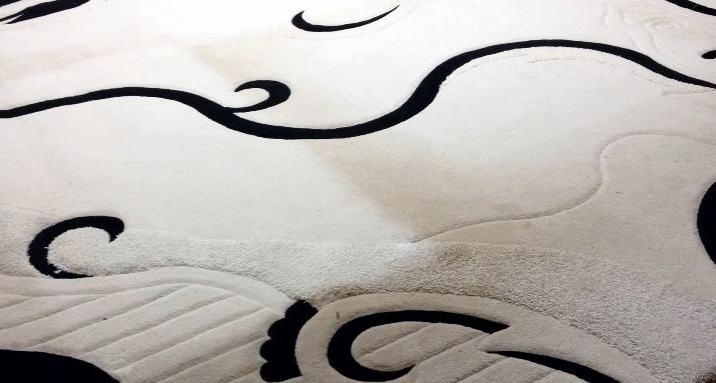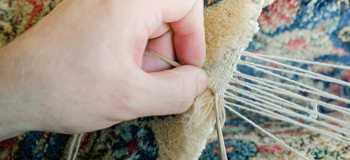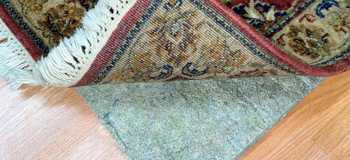Traffic Lanes, Wear Patterns, and Pile Distortion

by Lynn Tall, www.rugadvocate.com
Wouldn’t it be nice if our rugs looked new forever? Of course, that can’t be, but there are a few things you should know about that may help you keep them newer looking for longer.
Traffic Lanes
Traffic lanes are caused by soils deposited on the pathways we walk on around our furniture, or on our way through a room to the next room, and by low performing rug fibers, such as faux silk, that don’t hold up to normal traffic and show everything. Over time, the traffic lanes will become soiled and gray, whereas the rug under the furniture still looks new.
Perform twice weekly vacuuming in the worst areas to remove soil build-up, and rotate your rug 180* every six months to keep wear even. Regular annual professional rug cleaning will go a long way toward keeping your rug look newer longer.
Wear Patterns
Wear patterns are caused by worn down, abraded fibers due to heavy use, such as in a hallway or entry. Traffic lanes that do not receive extra attention eventually become wear patterns, and low performing fibers, such as faux silk, will literally break down under heavy foot traffic causing wear patterns. Different than normal traffic lanes that may wash out, wear patterns are permanent damage that will not improve with cleaning. If left unchecked, these areas will eventually become threadbare.
Put a good rug pad under your rugs to help absorb the worst wear. Rotate your rug and reposition furniture to protect these thin areas, and repair areas that are close to breaking before they become actual holes.
Pile Distortion
Pile distortion happens when wear causes rug pile to untwist and light is absorbed in these areas while the non-trafficked areas around it reflect light. In heavy traffic lanes, foot traffic may actually be “training” your rug pile to lean in the wrong direction. Improper spot cleaning at home can also be resetting the pile lay, and low performing fibers, such as faux silk, don’t hold their twist and will not lay in the right direction, even with normal foot traffic. These distorted dark patches of rug pile cannot be groomed properly to lay in the same direction as the rest of the rug pile, and it shows up more in open patterned rugs than in busy patterned rugs.
Vacuum your rugs from bottom to top, from side to side, and then one last time from top to bottom to help set the pile. (The bottom is the end of the rug that the pile lays toward.) If this doesn’t help, when the rug goes in for cleaning, ask your cleaner to pay special attention to grooming during the drying process. It may cost a little extra, but he/she has tools that will help improve the pile lay of your rug.
In all these cases, avoid low performing rug fibers – stick to wool.



